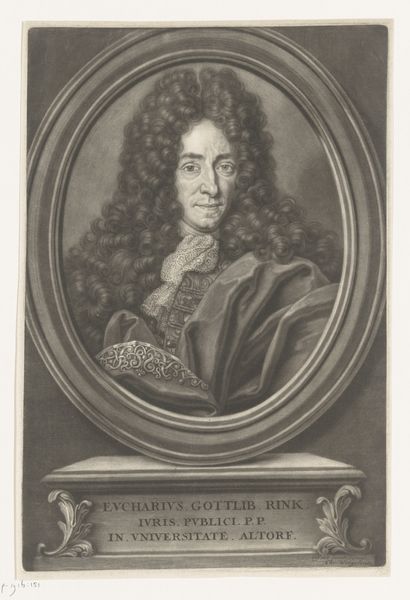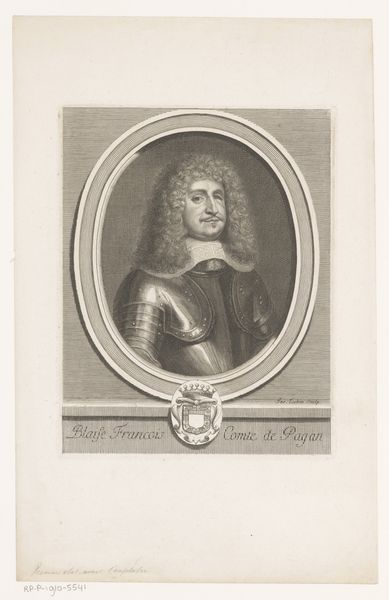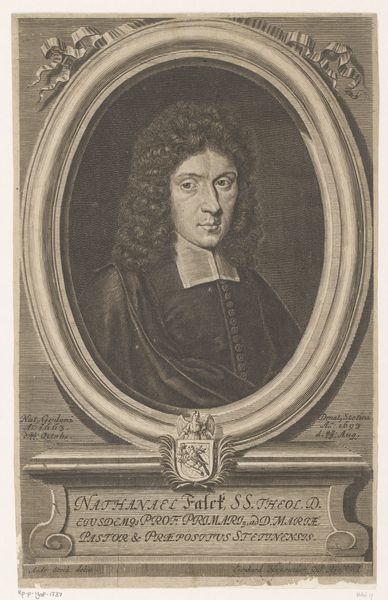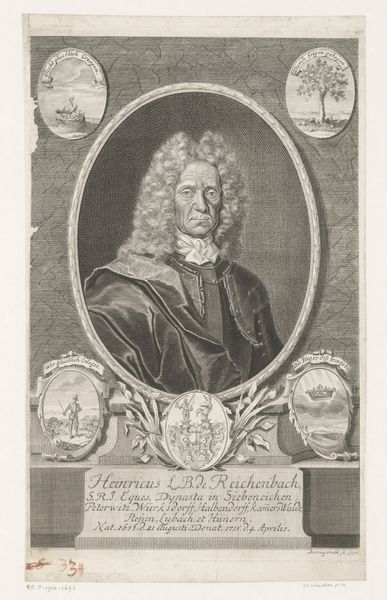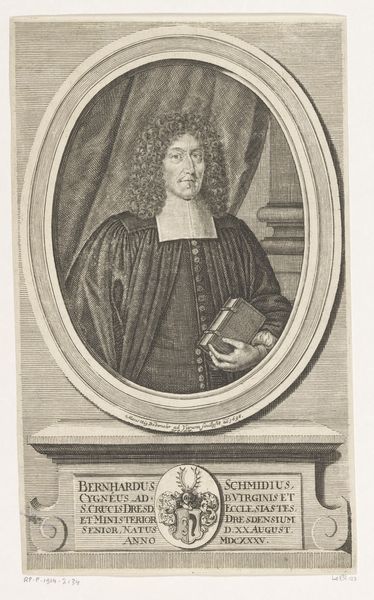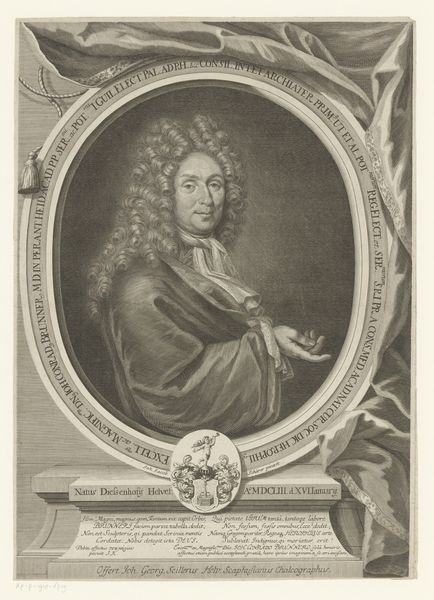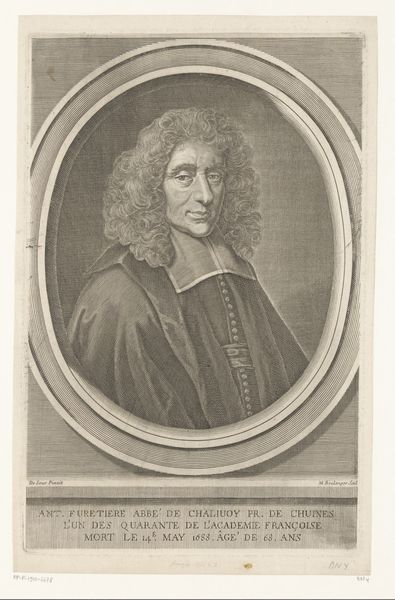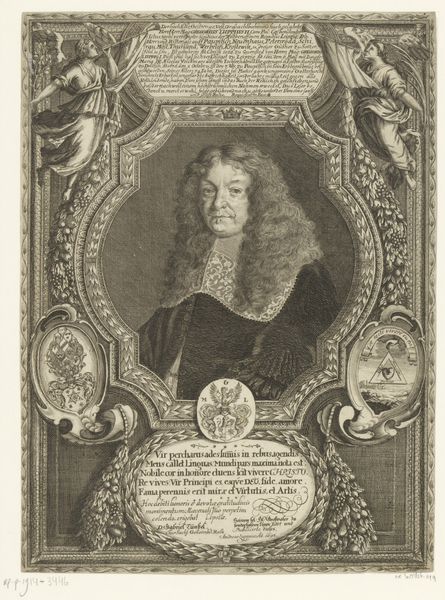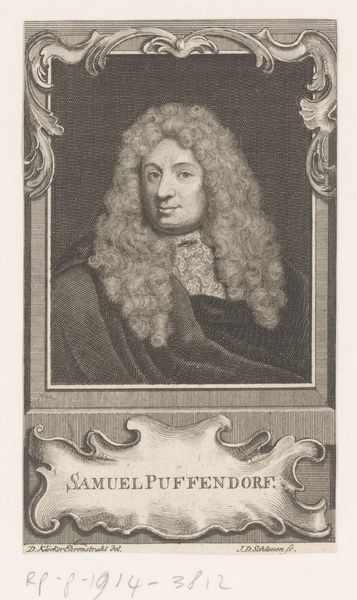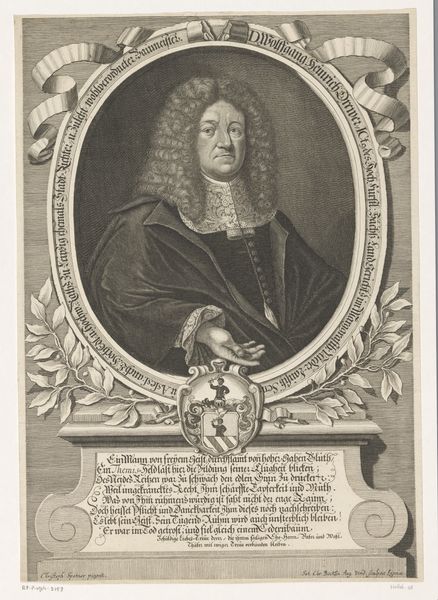
engraving
#
portrait
#
baroque
#
history-painting
#
academic-art
#
engraving
Dimensions: height 204 mm, width 149 mm
Copyright: Rijks Museum: Open Domain
Curator: Look at this piece. We're viewing Nicolas de Larmessin's engraving, "Portret van Jérôme Bignon," created in 1663. It resides here in the Rijksmuseum. Editor: Mmm, my first impression is of quiet dignity. The face seems to be lit from within, it feels gentle but precise. A melancholy grace almost. Curator: De Larmessin certainly captures the essence of his subject. The Baroque style is evident in the detailed rendering of Bignon's hair and the ornate frame surrounding him. Note the texture, created entirely through line. It makes it really engaging to spend time looking closely at the image. Editor: Yes, the engraving technique is exquisite, a showcase of craft! The texture and tonal gradations are impressive. What always strikes me about portraiture, especially something so formalized, is the sitter's agency—how much is projection, and how much collaboration? Curator: The inscription below the portrait adds another layer. The inscription reads, in essence, "What was rare in the past, remains so today." It praises Bignon and invites the viewer to really see him. Considering Bignon was a prominent lawyer, librarian, and advisor to the King, de Larmessin wasn't merely capturing a likeness but commemorating intellectual status. Editor: I suppose what I find fascinating is that despite all the indicators of position and achievement, one can't quite shake the feeling that what you're seeing is an incredibly complex emotional life—one made of far more than a wig, position, or title could express. Curator: Absolutely. Art is often a window, not just into a subject's life, but also into a wider cultural understanding. Editor: Well put! Every mark, tone, and texture—a story. Thank you!
Comments
No comments
Be the first to comment and join the conversation on the ultimate creative platform.

